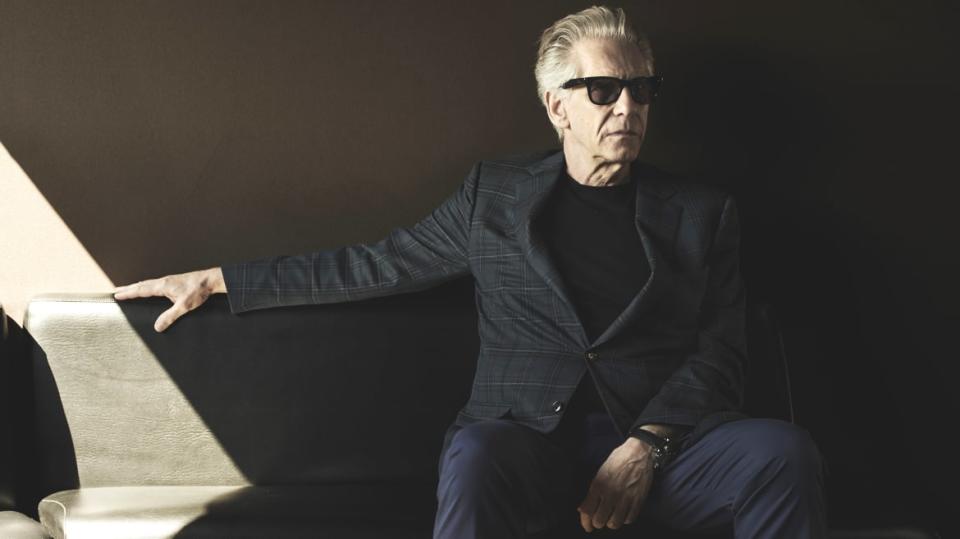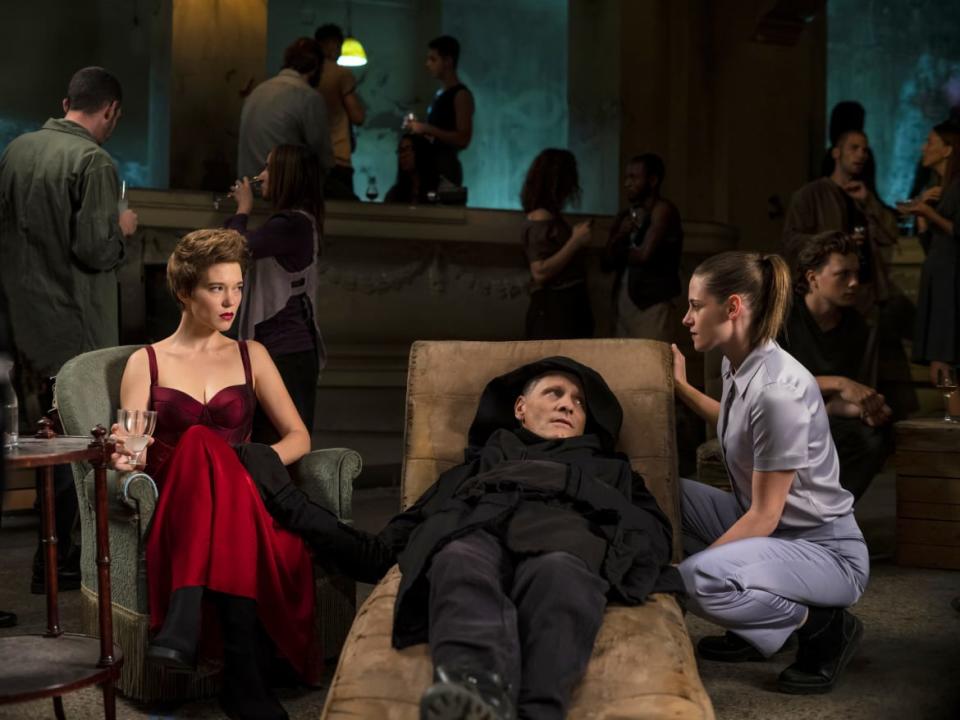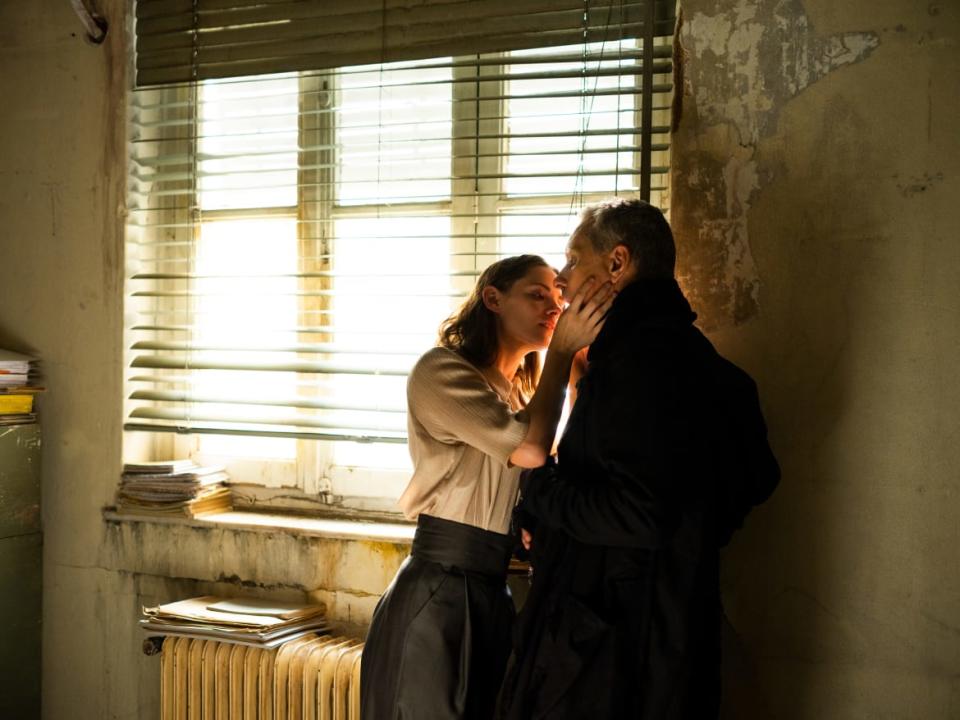David Cronenberg: Blame ‘Political Correctness’ for the Lack of Movie Sex

Filmmaker David Cronenberg is the godfather of body horror, a subgenre he pioneered in the 1970s with such boundary-pushing indies as Shivers, Rabid and The Brood, and then introduced to the mainstream in the ’80s and ’90s with the likes of Scanners, The Fly, Dead Ringers and the Cannes Film Festival-hailed Crash.
In those and other works, the 79-year-old Canadian auteur explored the twisted ramifications of infection and invasion, and mined the uneasy and constantly mutating relationship between man and machine—a concept described, in 1983’s unforgettable Videodrome, as “the new flesh.” Transgressively challenging and creepy, these are works that aim to get under the figurative and literal skin, where they can fester and pervert, forcing viewers to reckon with the strange and sinister symbiotic bond between sex and violence, contamination and corruption.
Since 1999’s eXistenZ, however, Cronenberg has largely moved away from such concerns, or at least segued out of the nominal horror arena for more diverse projects. Thus, there’s been no shortage of excitement regarding his return to his old stomping ground with Crimes of the Future. In theaters now, the director’s latest is situated in a world in which climate change has caused humans to begin growing mysterious new organs, which have been outlawed and are policed by the New Vice Unit and are cultivated, tattooed and then excised for display by Saul Tenser (Viggo Mortensen, Cronenberg’s A History of Violence, Eastern Promises and A Dangerous Method leading man), a performance artist engaged in intimate collaboration with his partner Caprice (Léa Seydoux). Tenser nurtures his organic creations via a variety of biotech devices that seem to have been designed by Satan’s decorator, and he and Caprice display their art for adoring audiences, who soon come to include Timlin (Kristen Stewart) and Whippet (Don McKellar), two National Organ Registry officials who are awestruck by the bizarre byproducts of Tenser’s body.
Robert Eggers Feels He Needs to ‘Restrategize’ After ‘The Northman’
As that synopsis likely suggests, Crimes of the Future is not for everyone, and that’s without even getting into a shocking opening act having to do with a young boy capable of eating inorganic material and the child’s mysterious father Lang (Scott Speedman). Those with a healthy appetite for the outlandish and grotesque, though, will quickly take to Cronenberg’s hallucinatory nightmare, not only because of its visions of surgery and mutilation, but due to its jet-black sense of humor. Lurking beneath the film’s exterior is a droll satire of art-world pretensions and absurdities—an element which shows that Cronenberg has far more than mere provocation on his mind. Following its celebrated premiere at this May’s Cannes Film Festival, we sat down with the legendary director to discuss body horror, carnal comedy, and his renewed passion for filmmaking.
You’ve now worked with both Robert Pattinson and Kristen Stewart, which begs the question: How big a fan are you of Twilight?
Before I cast Rob in Cosmopolis, I definitely watched a couple of Twilights. But then I watched quite a few other movies that he’d done by that time, just to gauge whether he could work in Cosmopolis, and of course I thought he could. I think both of them have evolved into really, really wonderful actors. There’s no guarantee that would happen, but they definitely have.
You’ve recently discussed pairing them together. Anything you can tell me about that?
No, no, I haven’t talked about that. What it was, was some journalist asked, would you ever work with the two of them again? I said, well, of course! But I said, on the other hand, I have no idea what their relationship is, whether they would do that, whether that would be good for a particular project. It was not something I brought up.

Léa Seydoux, Viggo Mortensen and Kristen Stewart in Crimes of the Future
Given that there’s so little adult sex in contemporary mainstream North American cinema, has it become more difficult to make an intensely eroticized film like Crimes of the Future (whose tagline, after all, is: “Surgery is the new sex”)?
No, I ignore all that stuff. I don’t self-censor at all. That can be a bad thing, depending on the context. But I wrote this 20-plus years ago, and I didn’t change a word; what went into production is the same script that I wrote then. Of course, I’m aware of how things have cycled, because I feel like I’ve been here before with political correctness, and now it’s something else. But it really is the same thing, which amounts to people trying to censor what other people say and think and do. It seems to be a common thing with us human beings that we do that periodically. I have to ignore it.
In the movie, you have an artist who is cutting himself open and offering up his most intimate deep insides to an audience, knowing that this makes him incredibly vulnerable to backlash of all kinds. It could be just misunderstanding, or rejection, or anger. That’s the nature of art, as far as I’m concerned. He is the avatar of an artist, basically—the Tenser character.
Crimes of the Future is being called “body horror,” and I understand why. But do you agree with that label? I ask because, beneath its fantastical exterior, the film struck me as an art-world satire.
First of all, you understand, “body horror” is not a phrase I’ve ever used. Somebody came up with it, I don’t know who, and it stuck. And okay, it stuck. But I don’t think of it as body horror, or horror at all—this movie in particular. So yes, there are definitely satirical elements, but there are also romantic elements and emotional elements and intellectual elements and God knows what. I’m hoping that I’ve offered a real universe of things in the movie, which is always the game for me. I just think about the bubble of the movie and what’s inside that, and what am I offering to my audience.
Do you think people sometimes miss the sense of humor in your work?
It eventually comes around, you know? Eventually, people accept it. But I can tell you, for example, the first screening that we had at Cannes—everybody’s in tuxedos and ball gowns and heels and is like, are we allowed to laugh? That’s what they think: Are we allowed to laugh? Then at a certain point, they cannot resist laughing. When Viggo says his particular line, “I’m not very good at the old sex,” you get a big laugh. Later, I talked to people, and they said, we were laughing inside at all the other jokes, but we weren’t sure we were allowed to laugh, or were we supposed to laugh. Eventually, people let go of that and they just react, and yes, there are many funny lines in the movie. For me, a life without humor is not worth living—or even possible, to live without humor. It’s a survival mechanism that we’ve developed. So in as much as I’m trying to create a real life in the movies, it’s the same. To me, a movie without humor is not really alive.
As you said, the film originates from your unproduced Painkillers script. Why did you want to revisit it now, especially after years of making films that were not in this particular vein?
Really, I almost don’t remember what happened in the past. There were attempts to make the movie. [Robert] Lantos, in particular, was the producer who was involved at a certain point. I think when it stalled, I was then offered A History of Violence, and I had just made Spider, I was broke, and suddenly there was a movie that was fully financed and I wouldn’t have to suffer through the agony of financing. I mean, that’s mainly producers suffering it, but directors suffer along with it. So, it wasn’t really a specific, “I don’t want to make this movie” kind of thing. It just organically drifted away.
Then it was the same producer, Robert Lantos, who phoned me one day and said, you know you haven’t been making movies. I said, yeah, I think I’m tired of that. I think I’m going to just write novels. It’s simpler to deal with. It’s not easier creatively, but it’s simpler pragmatically. And he said, I think you should look at your old script because I would really like to make this movie with you and I think you would enjoy it. I said, well, I’m sure it’s completely irrelevant now because time has moved on, technology has moved on, and it was kind of a sci-fi thing. And he said what I consider to be a classic line: “No, no, it’s more relevant than ever.” I thought, okay, I have to appreciate that good dialogue-writing. I will read the script. I read it, and to my surprise, I thought—first of all—he’s right, it is totally relevant. And secondly, I really liked the characters and the ambiance and the whole context of it. I thought it would be a challenge, but a fun one to bring to life. So, it wasn’t really a monumental thing; it was kind of random and accidental. I guess I was somehow subconsciously ready to make another movie, finally.
You’ve worked with Viggo Mortensen more than once. How did he—and the rest of the cast—come aboard?
It’s a long story. Casting is, as I’ve said many times, a black art, because the passport of your actors is a factor—it’s a Canada/EU production, so you can’t actually have an American in it and still get financing. There’s a lot of complex stuff that movie fans don’t normally know about or care about, but it’s a big factor for you as a director and as a producer. For example, Viggo originally wanted to play the cop role, Cope. He thought that would be more interesting for him to play, because he’d played undercover guys before and thought maybe playing sort of a villain—the representative of a repressive society—would be more interesting for him. But I convinced him that, really, playing Tenser would be unusual for him, because we’ve done three movies together before this, but none of them had been a script that I had written, so this was more innately me. It was also a more unusual role for him, because it’s very reactive, very passive, very vulnerable—not his usual kind of thing. Eventually, he saw reason [laughs] and agreed to play that role.
Likewise, with Léa, I had originally cast her as Timlin, which became the Kristen Stewart role. But then I started to have trouble pairing Viggo with an actress who could play Caprice; I was not finding the right actress. Léa heard about this and said, David, I really think I should play Caprice. As soon as she said that, I said, yes, you are the actress I’ve been looking for, I just didn’t know it. At that point, it opens up a character, Timlin, who I needed a very different kind of actress for. That was Kristen, and I was very excited to get her to play that role. You’re kind of an alchemist when you’re casting. Casting is an important part of directing, and also one that people don’t really consider as part of directing, but it really is. We were being like an alchemist—you’re trying to anticipate what the chemistry will be amongst these actors when you have never seen them together before. If you’re good at it, and you’re lucky, it works out—which I think it definitely did for this movie.
Was there any pushback from producers or distributors about the project’s more graphic elements? Or did they know what they had gotten into with you?
Basically, Robert—it still took him three years to get the financing together. We got 19 entities involved, and no studios; you’re just dealing with some government agencies that invest in film, like Telefilm Canada, and you’re dealing with distributors like Neon here and Metropolitan in France, and they will advance you some money and so on. So, there are no studios, there’s just us. That’s normally the way I make films. There’s no Big Brother that you have to worry about. We’re just making the movie together. Robert absolutely understood the movie from top to bottom. There was never a question of censoring, or self-censoring, or anything like that. I wouldn’t make a movie like that.

Kristen Stewart and Viggo Mortensen in Crimes of the Future
There was a lot of talk before Crimes of the Future’s Cannes premiere about the potentially divisive reaction it would receive. Yet in the end, festivalgoers seemed to respond quite rapturously. Were you surprised it didn’t ruffle more feathers?
Yes, Cannes can be brutal. It’s also a very odd audience, because some people are coming to see the movie, but some people are just coming to be on the red carpet, and some are there to see Sharon Stone or Léa or whomever, so sometimes they’re not knowing what they’re walking into. That certainly happened with Crash all those years ago—I lost about a third of an audience there! So, I guess I was just being a little self-defensive there, self-preservation, by saying it could happen again. I don’t know, it’s not the same movie. But no, it was rapturous, and nobody walked out of that big screening.
Now that you’ve returned to directing, do you feel a newfound drive to continue making more movies?
Sure, yes, I have a couple of projects. One of them was announced at Cannes—it’s called The Shrouds, and it would star Vincent Cassel. We only announced it because he read it and immediately agreed to do it. Of course, we’ve worked two times before, in Eastern Promises and A Dangerous Method, so we know each other well. And I really thought he would be perfect casting for the lead role in The Shrouds. If everything else goes well, and the financing and all that, I would be shooting that next spring in Toronto.
Get the Daily Beast's biggest scoops and scandals delivered right to your inbox. Sign up now.
Stay informed and gain unlimited access to the Daily Beast's unmatched reporting. Subscribe now.

 money
money 